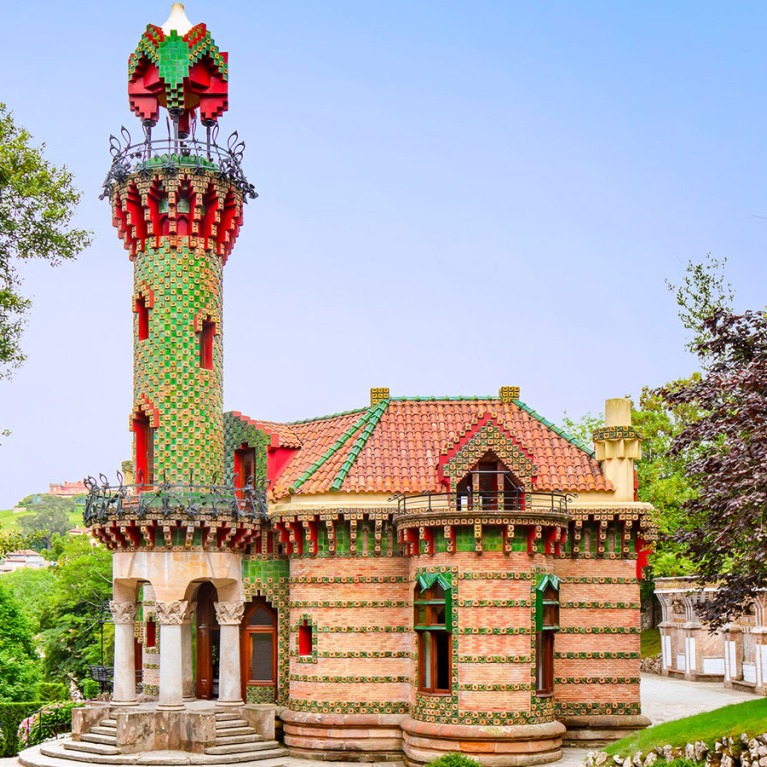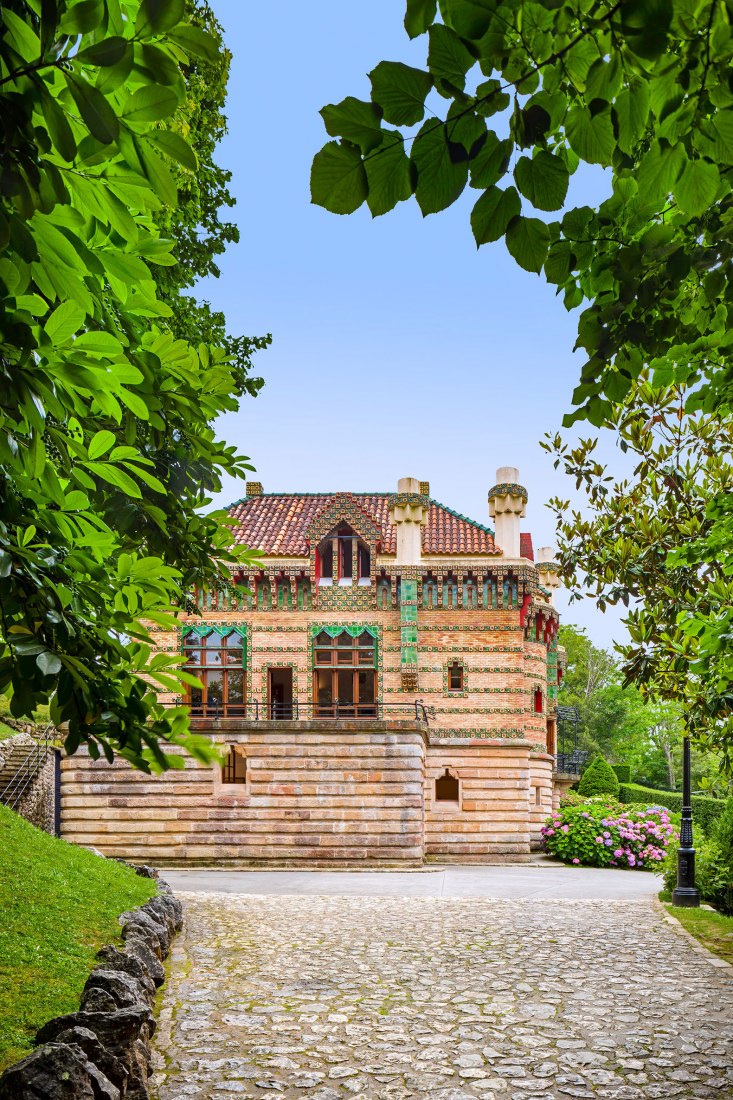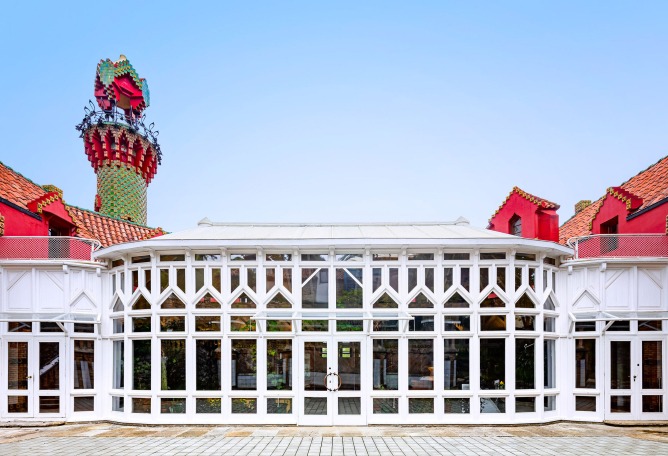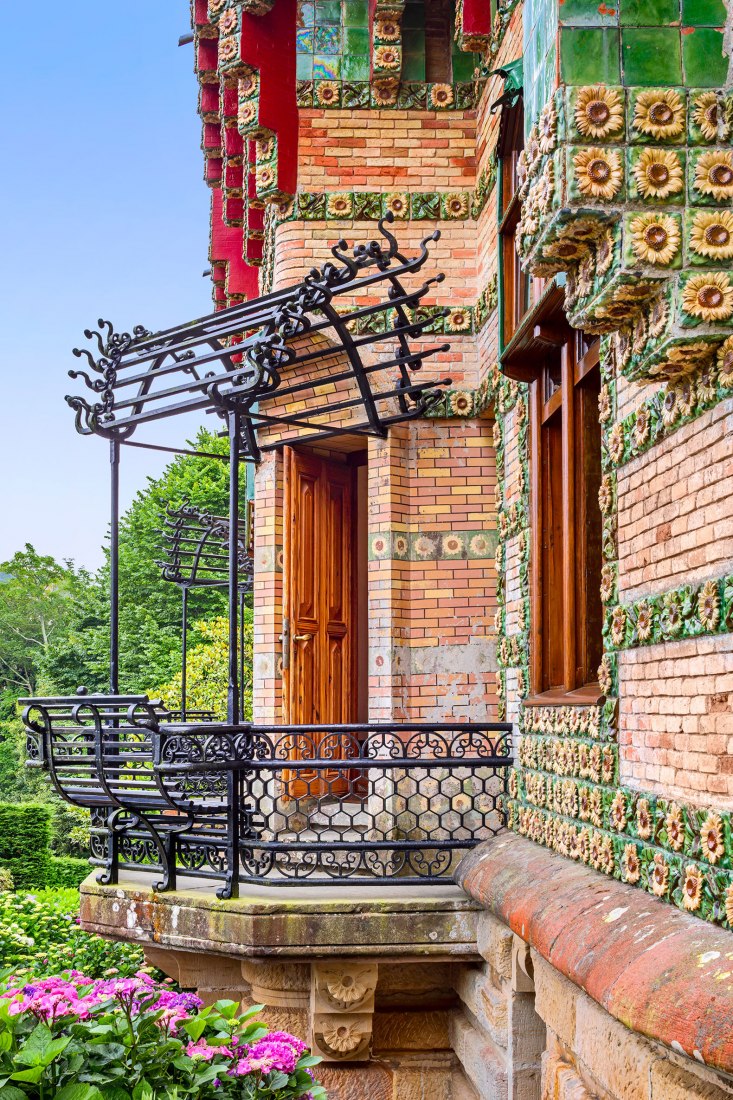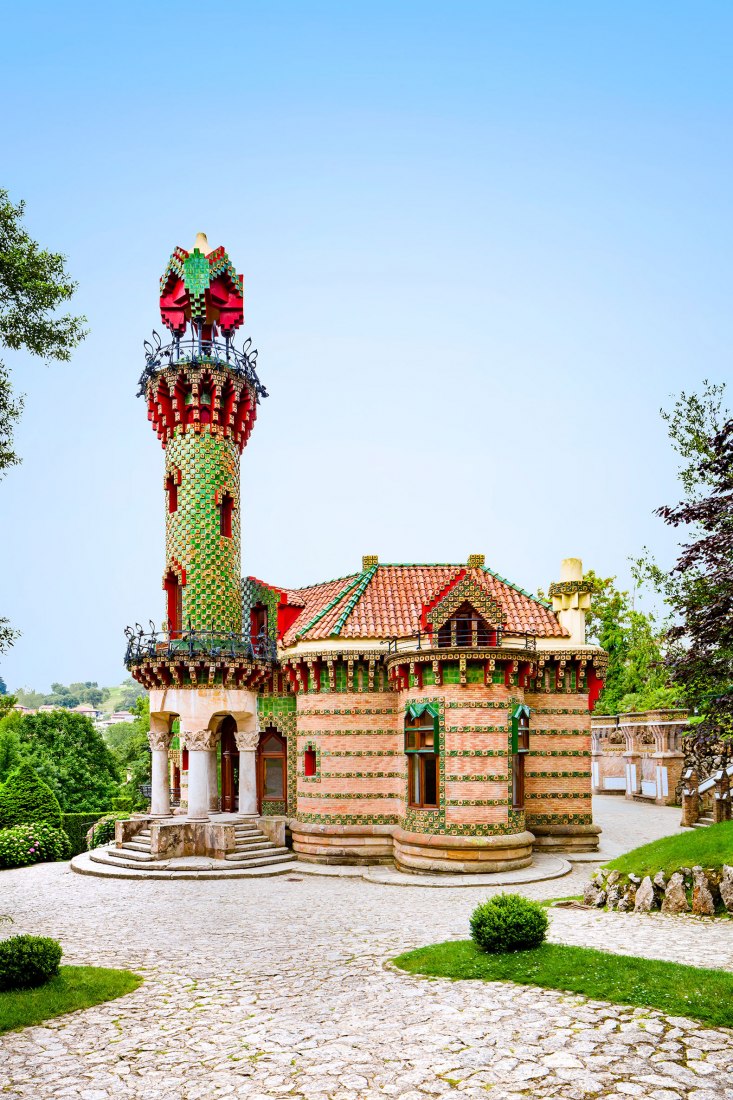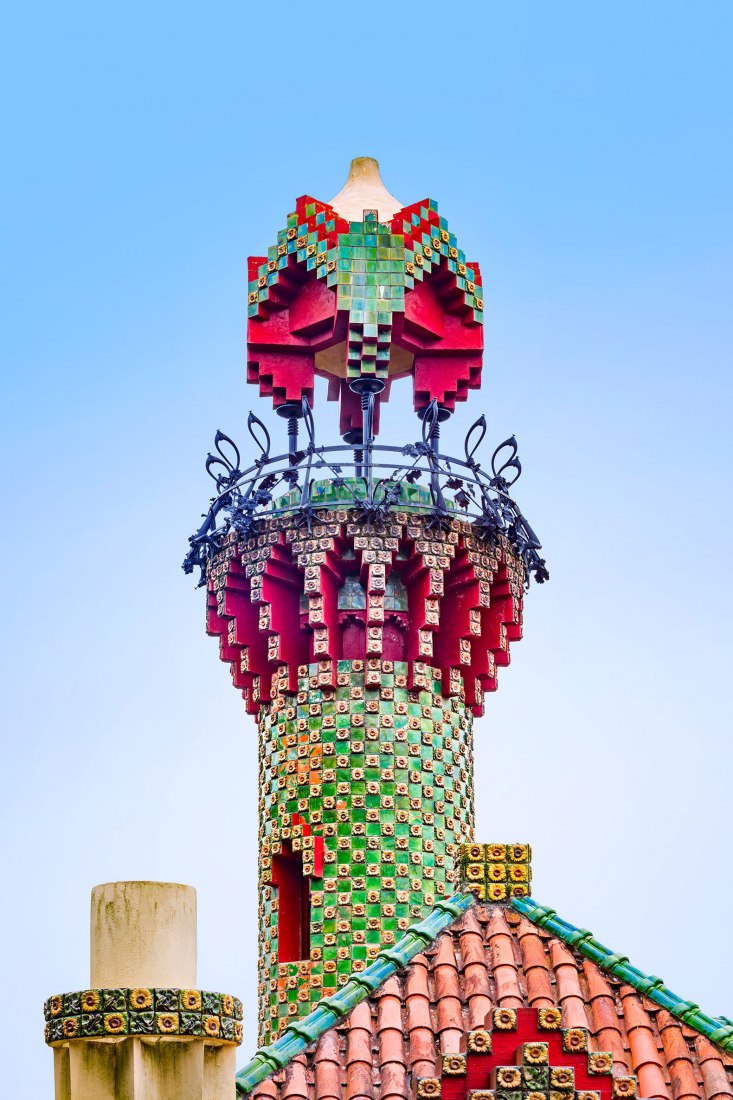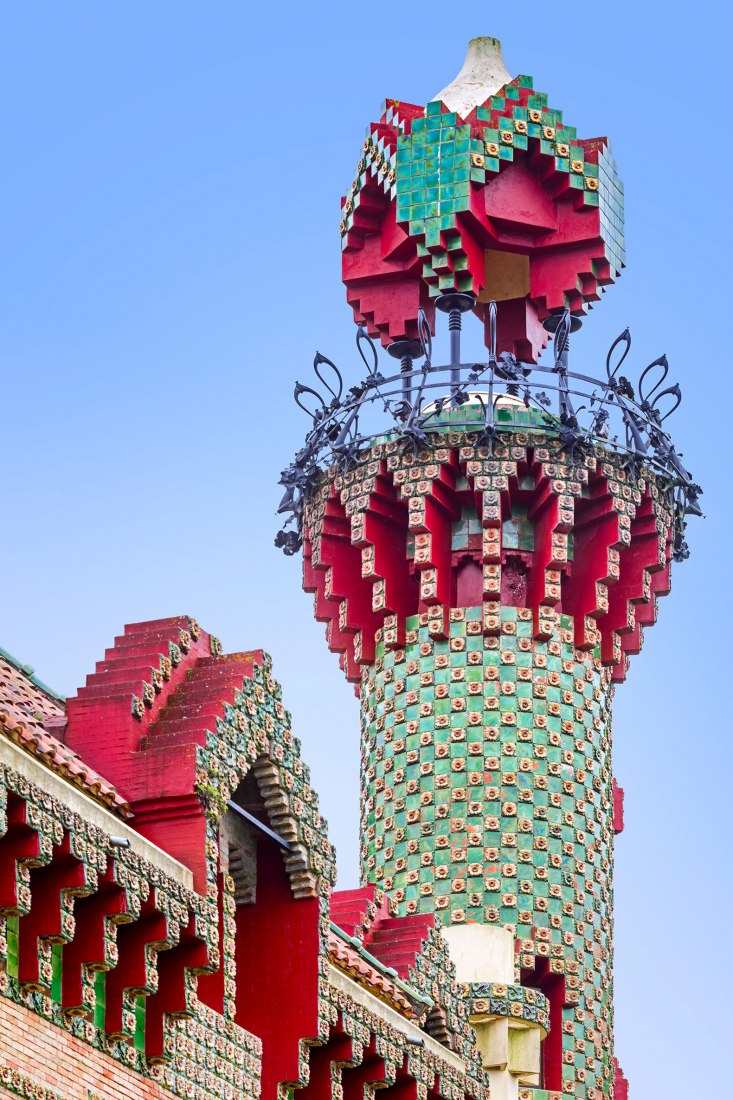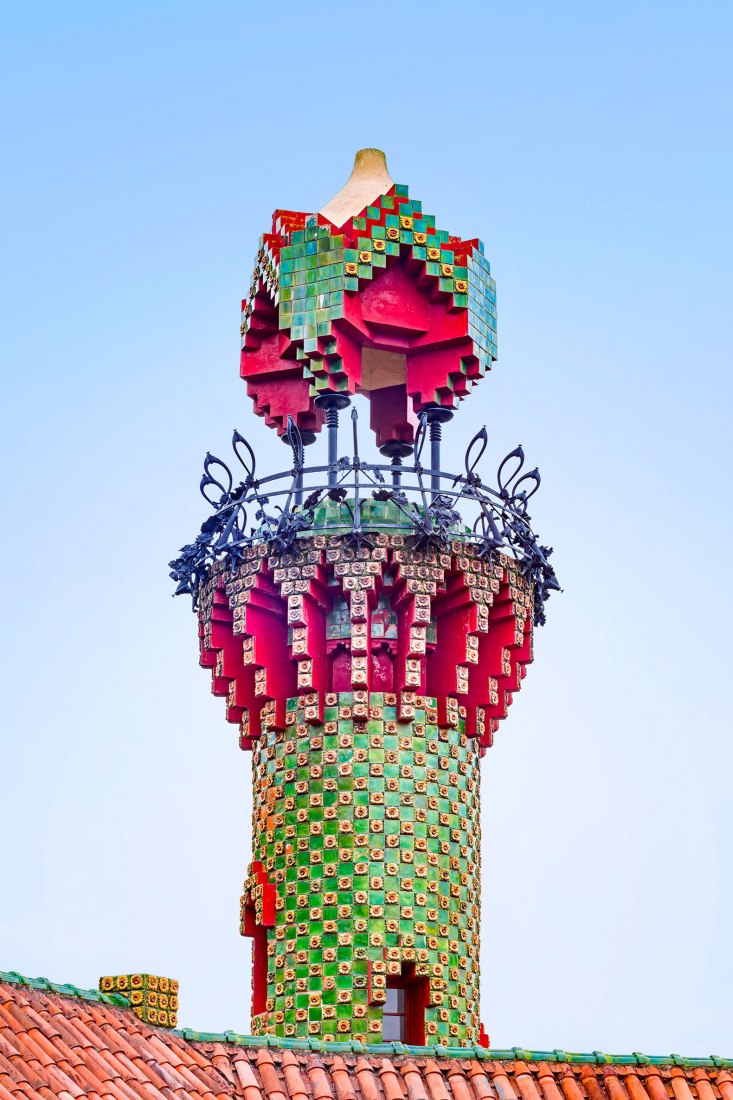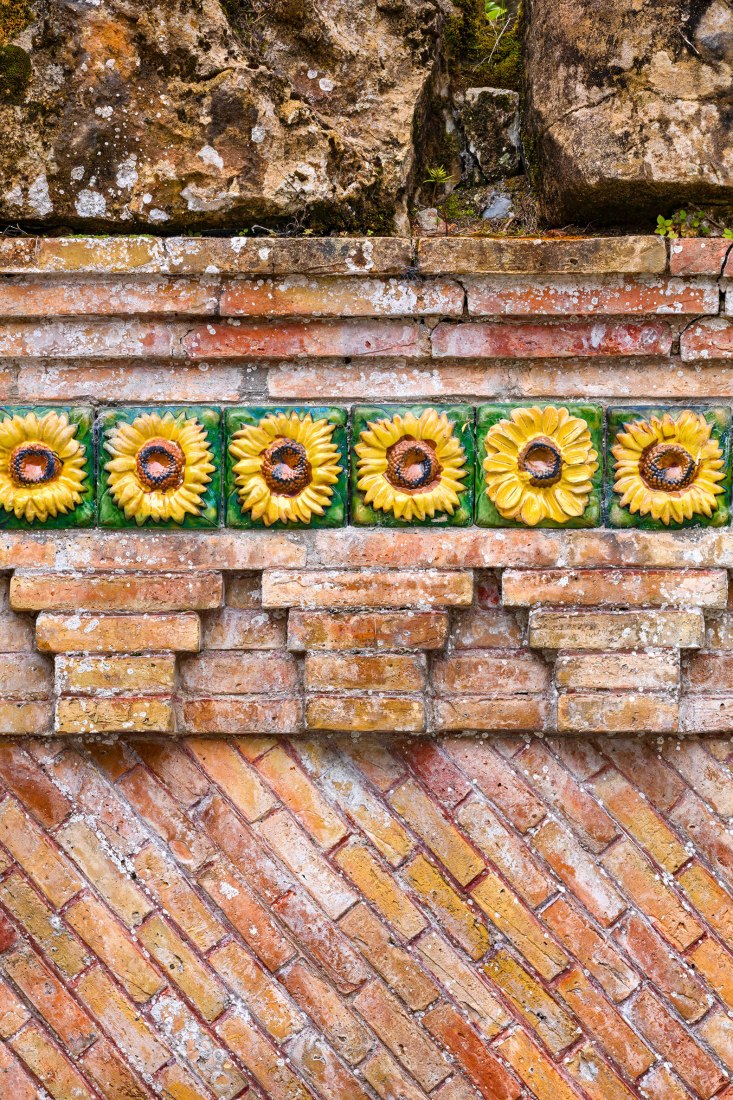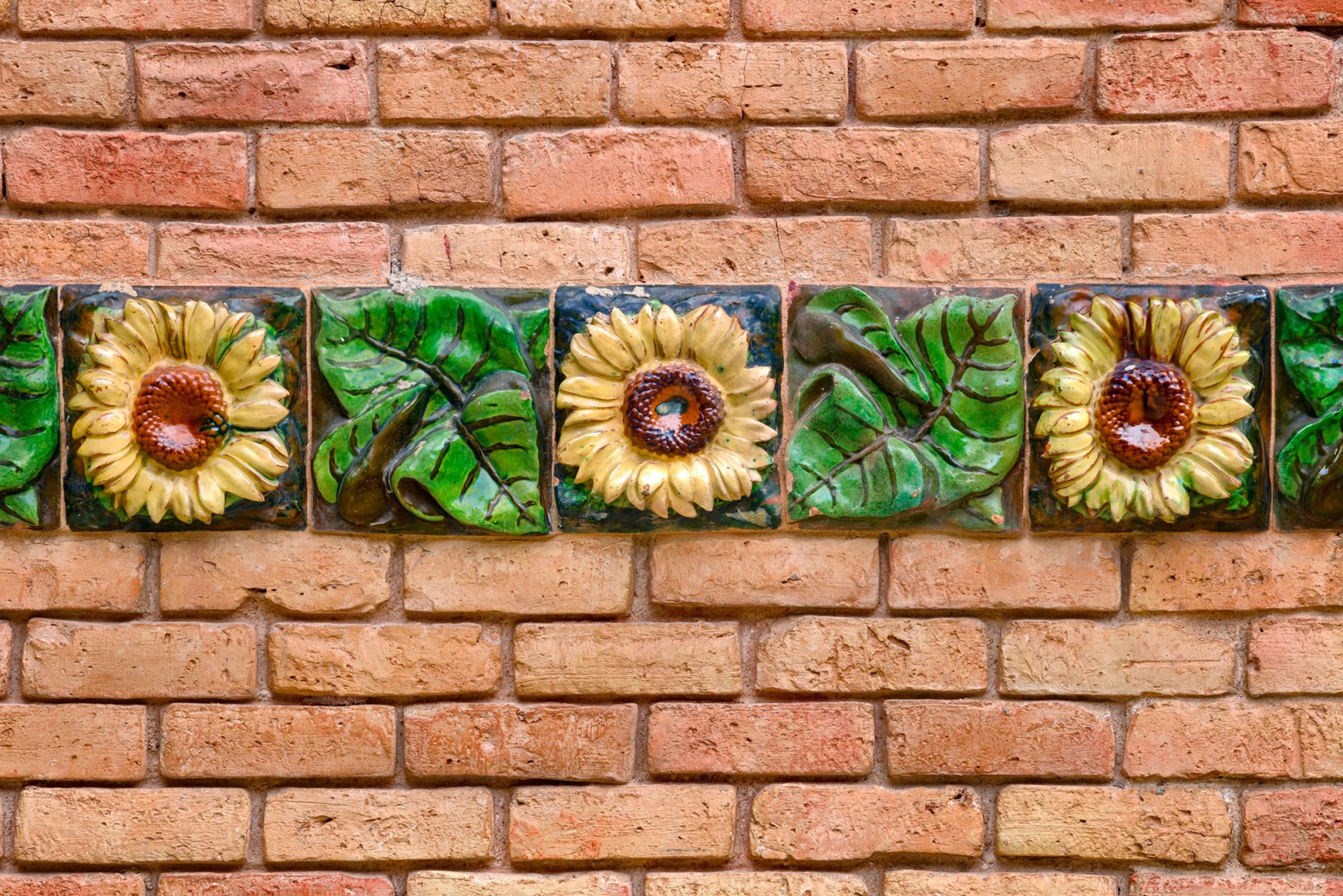El Capricho is a contemporary work to Casa Vicens (1883-1888), and both projects are Gaudí's first buildings. These works are going to be fundamental in the evolution of the architect's career, and essential for the study of his career. Both define the style of its first era, which is distinguished, as noted by L.E. Cirlot, by Mudejar, oriental and medieval influences.
The construction of Capricho was directed by Cristóbal Cascante, friend and colleague of Gaudí's promotion, at the same time that he was building the Vicens house in Barcelona.
The exterior of the building is characterized by the use of stone in the lower part of the brick seen adorned with glazed ceramic strips representing sunflowers and leaves in the rest, and the superposition of the curved surface facing the straight.
The work is in a complicated terrain: valley with a steep slope where there was a forest of chestnut trees, whose slopes descend towards the sea, exposed to the north. The answer to all these premises that gave Gaudí was a development of the project horizontally, orienting the facades of the areas destined to the day to the north. Gaudí spoke with two preexistences of the place and incorporated them into his work: a greenhouse and a temple, which he transformed into the central body of the building and the base of the tower-minaret, respectively.
The interior design responds mainly to the necessary program for a single person and with a recreational purpose, since it was a building intended as a holiday residence. It is distributed in three plants. Gaudí distributed the space based on the route of the sun, situating the rooms for morning activities to the south, and the evening ones to the west, while the summer ones are oriented to the north.
